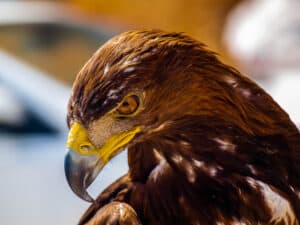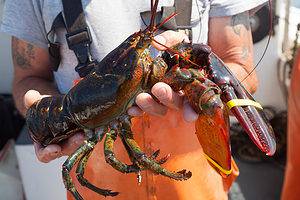Lobsters probably aren’t at the top of your list of interesting animals. However, if you learned how they communicate with one another, you might find them more intriguing. Lobster communication is a gross business, but there’s more to it than how it sounds. We’ll learn more about that below. First, let’s talk a bit about lobsters and the great many kinds that exist.
What is a Lobster?
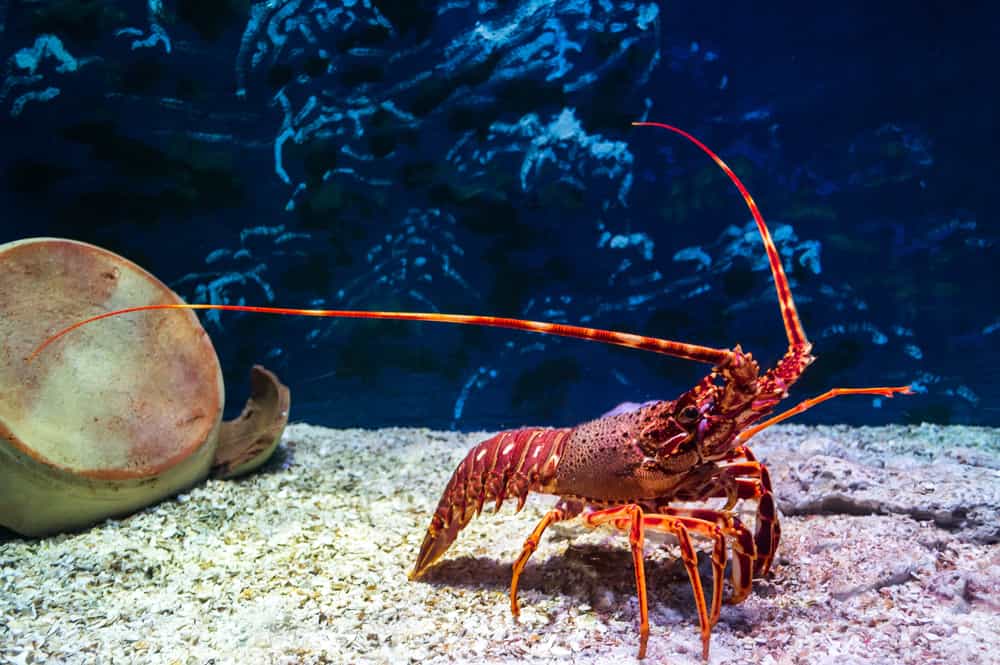
75 different species make up the group of animals we call lobsters.
©Haland/Shutterstock.com
Before we learn about lobster communication, let’s discuss what classifies as a lobster. According to the Merriam-Webster dictionary, a lobster is “any of several large edible marine crustaceans with stalked eyes, a pair of large claws, and a long abdomen.” If that seems like a broad definition to you, that’s because it is. Two types of lobsters roam the world’s oceans: clawed lobsters and spiny or rock lobsters. Clawed lobster includes 30 different species, while spiny includes 45 species. The most common lobsters humans eat are the American lobster (also called Maine lobster) and the Norway lobster. Both of these are clawed lobsters. Some spiny lobster species include crawfish (crayfish or crawdads) and painted rock lobsters.
So, How Do Lobsters Communicate?
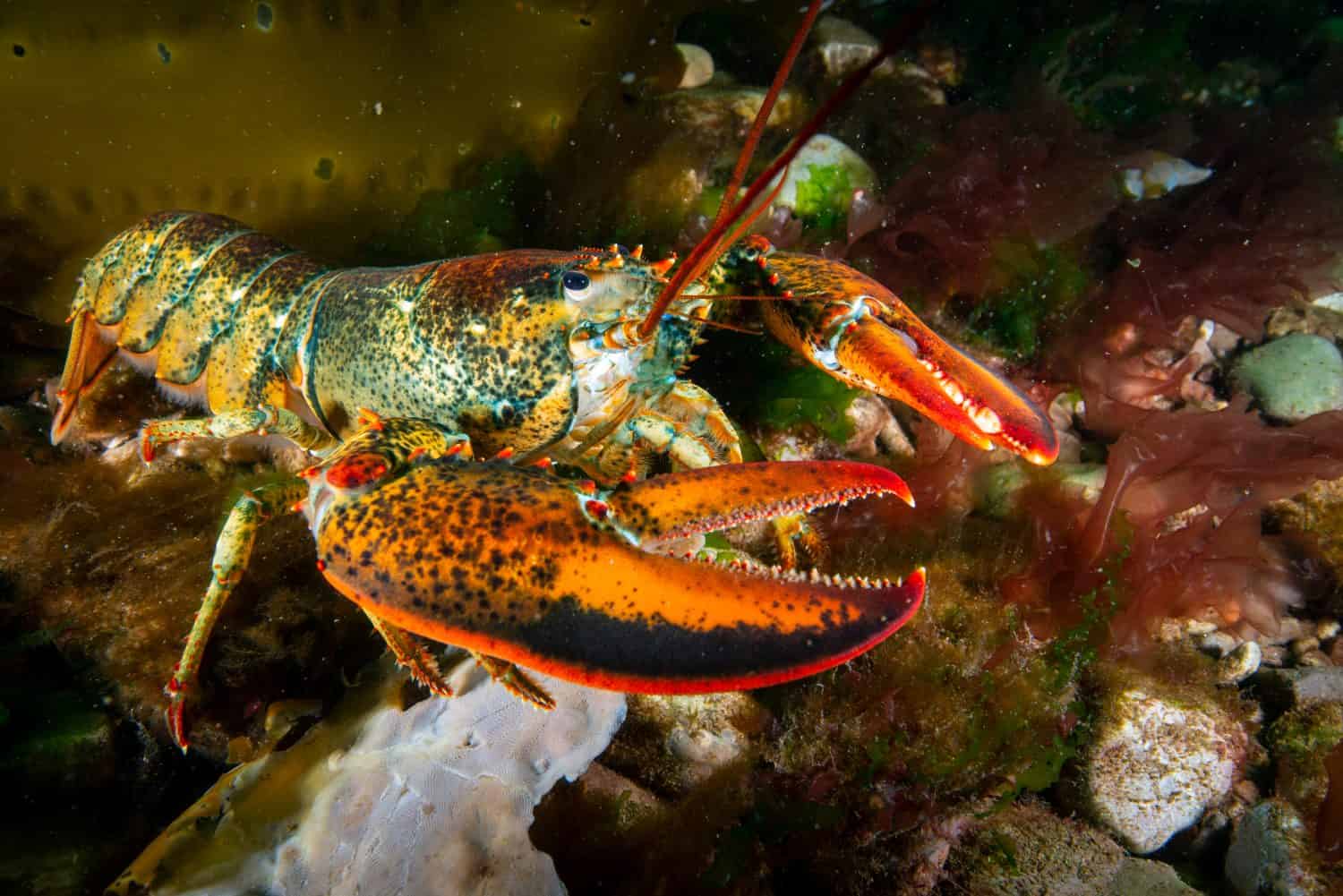
Lobsters communicate by spraying urine at each other.
©RLS Photo/Shutterstock.com
As disgusting as it may sound, lobsters communicate with each other through their urine. Yep, they basically shoot pee at each other. Since the urine contains pheromones, this allows lobsters to learn more about their fellow crustaceans. Pheromones are substances or chemicals given off by animals that produce responses in their own species. These signals are received by smell. Lobsters have a bladder underneath their brain, so they basically excrete urine out of their heads.
A dominant male lobster communicates his willingness to mate by spraying his pheromone-filled urine into the surrounding water. The females smell it and come toward him. These signals also warn incoming males that the area is taken and to back off. Most lobsters are not social and will fight with one another if challenged.
Do Other Animals Communicate Like Lobsters?
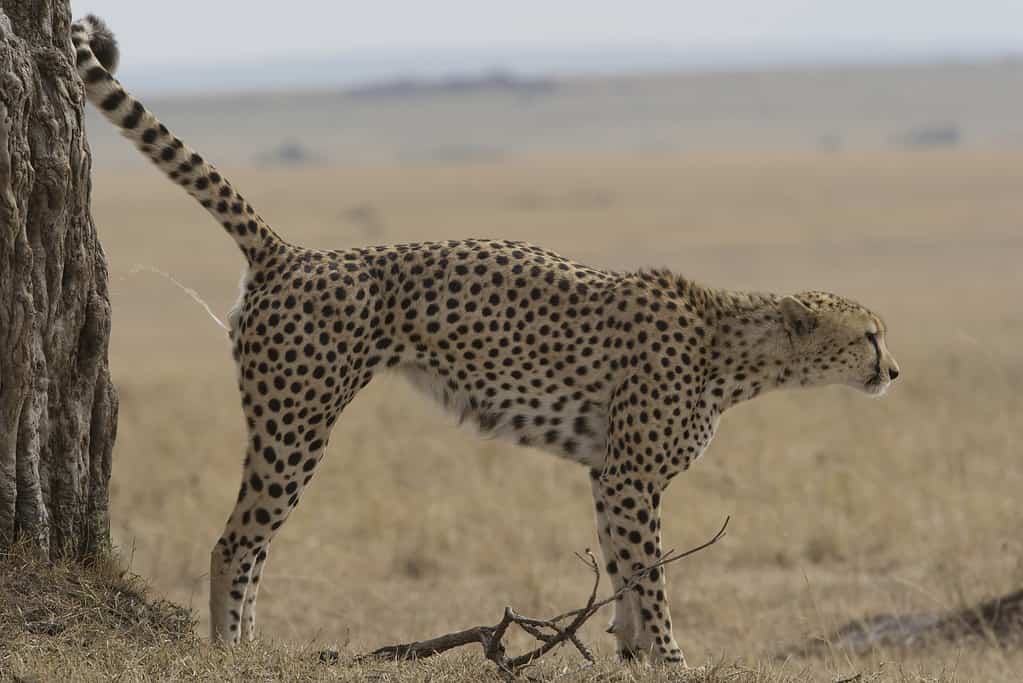
Intact (not neutered) male cats of all species scent mark or spray to mark their territory and attract females.
©sandf320/iStock via Getty Images
They sure do! While lobsters communicating through pee might seem insane, this type of conversation is actually very common in the animal world. Male cheetahs (and all intact male cats) spray urine on trees and rocks to mark their territory. This also signals to females their intention to breed. Female dogs produce pheromones when they’re in heat. Male dogs smell it in their urine.
Humans produce pheromones too, but they are released through our pores like sweat. These signals comfort a human baby when its mother holds it. When you’re away from home and experience comfort when you snuggle with a jacket or blanket from there, you can thank pheromones. These chemical smells also draw humans together to reproduce. In fact, attraction between two humans has much to do with these scent signals! You won’t know when you smell pheromones, either. That’s because they don’t have a true odor. They simply get processed through your olfactory system (or the nose and nasal cavities). Isn’t that neat? You talk to other humans all around you without ever saying a word!
The photo featured at the top of this post is © xiaoxiao9119/Shutterstock.com
Thank you for reading! Have some feedback for us? Contact the AZ Animals editorial team.





